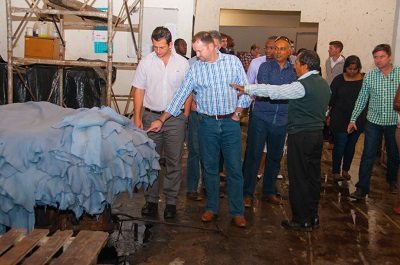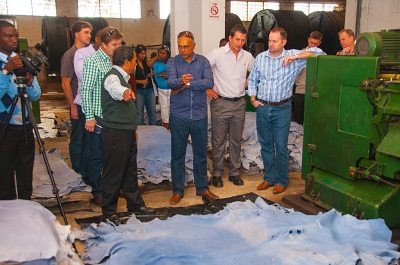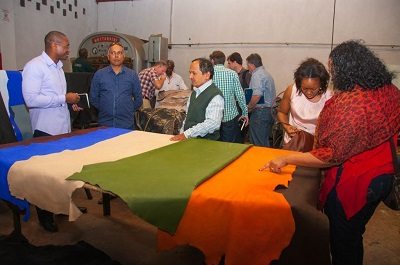

REGISTERED OFFICE
Plot 4970, Manda Road,
Industrial Area,
Lusaka, Zambia
Tel:+260 211 369 000
Fax:+260 211 369 050
Postal Address:
Private Bag 17, Woodlands,
Lusaka, Zambia
We value your feedback and comments and are always eager to hear from you. Whether you have a specific query or simply want to share your thoughts, feel free to reach out. You can contact one of our representatives directly or fill out our thoughts and questions form for a prompt response.
For media inquiries, please contact media@zambeef.co.zm
For investor relations inquiries, please contact ir@zambeef.co.zm
For general inquiries , or if you would like to become a Novatek agent, please fill out our feedback and questions form.
Zambeef Products Plc has zero tolerance towards corruption. We remain committed to being a responsible corporate citizen and are dedicated to maintaining integrity and transparency in our community. To safely and anonymously report any unethical behaviour or misconduct that you have witnessed or experienced, please fill out the feedback and questions form with as much detail as possible. Every report is handled with the utmost seriousness and discretion.
24/07/2015
Zamleather keen to see the leather industry grow in Zambia
LUSAKA, ZAMBIA – Regional integration and local value addition are the keys to expansion of Zambia’s leather sector, according to experts from the footwear industry who visited Zambeef’s Zamleather division in Lusaka this week.

The strategy was discussed as delegates from the Southern African Footwear and Leather Export Council (SAFLEC) toured the factory to learn more about Zambeef’s drive to build the local and regional footwear industry and encourage people to buy locally manufactured shoes and other leather goods.“We’re keen to see growth within the leather industry and by adding value to our raw materials we will be able to compete better here and in the region. This is why trade exchange programmes like these are important and there is a lot we can learn from each other in order to better strengthen the sector,” said Zamleather General Manager Richard Franklin.
“Zambia’s leather industry is still in the early stages of resurgence, and working with counterparts in the region would be an added advantage when it comes to sourcing duty-free value addition components such as labels, laminates and soles within the SADC region,” he added.

Zamleather, one of Zambia’s largest operating tanneries, manufactures leather products such as wet blue hides, protective clothing, industrial footwear and consumer footwear under the Zamshu brand. The Kaleza Z-12 model leather football boots are also one of the products from Zamleather and are unique in that they are not only manufactured in Zambia but were also designed locally, a first for Zambia. Zamshu produces around 600 pairs of shoes per day and also exports leather to regional and international markets.
The Zambeef division processes 6,000 hides per month at the Lusaka tannery and a further 2,000 per month under contract at Kembe. There are plans to expand the facilities to process 10,000 hides per month for the beginning of 2016. “The local leather industry has barely scratched the surface with products like consumer shoes, handbags and belts still untapped. The market has so far responded positively to our Zamshu products and we have since doubled production of our shoes in the division. Our safety shoes and boots have been particularly popular, and this is a good sign that there is demand for locally produced leather products, which are manufactured to world class standards. It is definitely an exciting time for the industry and we look forward to seeing how the leather sector evolves over the coming years and we hope to be the ones leading the way,” added Mr Franklin.

The SAFLEC group, who are in Zambia for the SA Footwear and Leather Zambian Expo 2015, toured the Zamleather tannery and shoe factory in a bid to understand the structure of the leather industry in Zambia and identify opportunities.“We are impressed with the quality and precision of the work being done here. Clearly there is vast potential for growth in this market. South Africa has only in recent years become competitive in the sector and Zambia is one of the main export destinations for our shoes and other leather products. We see Zambia heading the same way with dedicated investors and appropriate reforms in the industry,” said SAFLEC chairman Sanjay Pattundeen.
The SAFLEC group comprised buyers and sellers, representatives from the South African Department of Trade and Industry as well as South African Footwear and Leather Export Council executives.
-Ends-
About Zambeef Products Plc
Zambeef Products Plc is one of the largest integrated agribusinesses in Zambia and the region. The group is principally involved in the production, processing, distribution and retailing of beef, chicken, pork, milk, dairy products, eggs, stock feed and flour. The group also has large row cropping operations (principally maize, soya beans and wheat), with approximately 15,700 hectares of row crops grown under irrigation and a further 8,000 hectares of rain-fed/dry-land crops planted each year producing 120,000 tons of grain annually. The group is also in the process of rolling out its West Africa expansion in Nigeria and Ghana, as well as developing a palm project in Zambia. It slaughters more than 60,000 beef cattle, 5.5 million chickens and 54,000 pigs per annum, while also processing 11 million litres of milk and producing 110,000 tons of stockfeed and 48 million eggs per year. The company has 138 retail outlets throughout Zambia and West Africa, along with four wholesale depots.More information is available at www.zambeefplc.com.